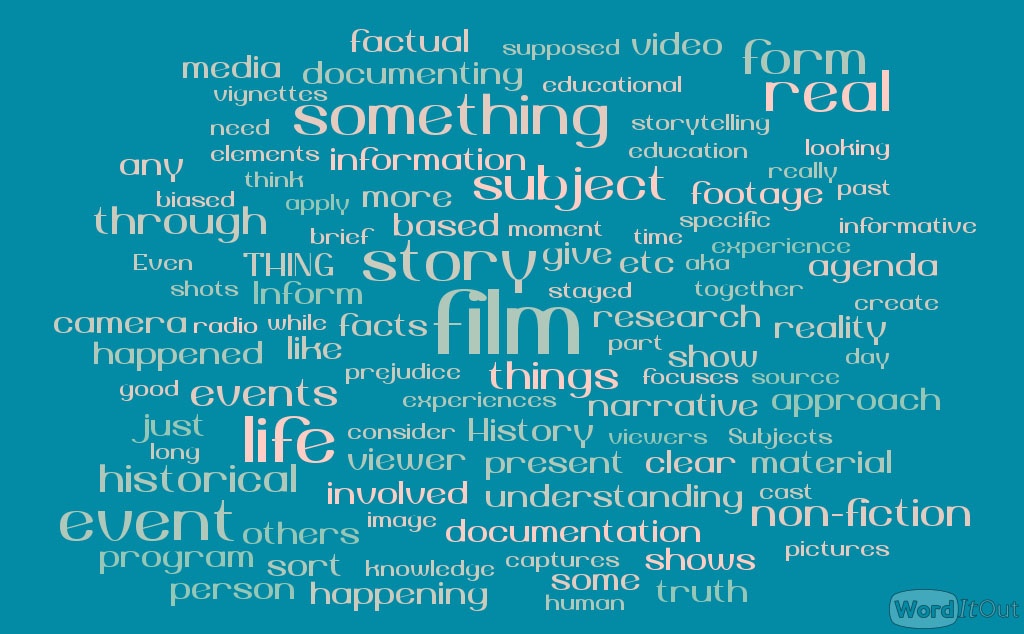The dictionary defines a documentary as a film that “us[es] pictures or interviews with people involved in real events to provide a factual report on a particular subject.”
Realism is a concept that is portrayed throughout both fiction and documentary films. Whereas a fiction film may deviate from complete authenticity throughout its narrative to suit its particular purpose, a documentary film attempts to capture the absolute truth of the subject matter. In effect, a documentary strives to provide a highly informative and educational piece of media for a wide audience to consume.
Bill Nichols, a documentary theorist, stated that all films fall into one of two categories of documentary. These include ‘wish fulfilment’ (fiction films) and ‘social representation’ (what we would typically refer to a documentary as). Nichols claims that even the most fictitious work provides an accurate report of the culture and society it was produced under. Alongside this, the actors and physical locations utilised are authentically represented, according to Nichols. On the flip side, Nichols believes that documentaries are often as exciting and dramatic as fiction films and generally less predictable, due to the fact that they draw their subject matter from reality.
With this in mind, it is sometimes difficult to differentiate between these two forms of filmmaking. This is due to many documentaries using a number of dramatic techniques from fiction films to recreate a truthful event in an entertaining manner. Conversely, a fiction film may borrow a variety of techniques utilised throughout documentaries in order to make the events of the film appear to be more authentic and nonfictional.
To reinforce this idea, it is important to establish a scale. On one end of the scale is an entirely fictitious film, produced for the sole purpose of entertainment with no regard for realism or authenticity. On the other end is a ‘pure documentary’ which is entirely nonfictional and produced for the sole purpose of education on a particular subject matter. In between these two extremes is a large grey area, brought to light by Bill Nichols. This area includes a wide variety of aforementioned films, including a seemingly fictional dramatisation of truthful events as well as an entirely fictional narrative which purports a sense of authenticity, due to the techniques employed by the filmmakers.
